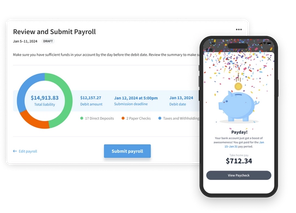
Eddy’s HR Mavericks Encyclopedia
The world's largest free encyclopedia of HR, with 700+ HR articles and podcasts.
Created by Eddy and our HR Mavericks community.
Diversity Workplace Events
There are many studies that show teams are more efficient and productive when they are diverse. Improve your organization’s productivity, engagement, and awareness with workplace diversity events.
What Are Diversity Workplace Events?
Diversity workplace events are activities that are geared towards educating employees on diversity, equity, and inclusion topics, such as cultural sensitivity or creating an inclusive workplace culture.
Why Are Diversity Workplace Events Important?
These events are important because they increase awareness of diversity in an experiential way, allowing employees to learn from each other, increase productivity, and improve your brand.
- Increase creativity. An increased opportunity for creativity exists when people with different cultures, perspectives, and experiences, come together. Workplace diversity events provide a gateway for employees to learn more about various cultures and backgrounds, increasing workable solutions to workplace challenges.
- Increase productivity. Diverse workplace events increase employee productivity by providing an opportunity to share experiences and perspectives, hence increasing the potential for increased productivity. Studies have found that diverse groups consider an array of ideas and produce more possible solutions. A Boston Consulting Group (BCG) study found that diversity increases an organization’s net income by 45%.
- Positive brand. Organizations that embrace diverse workplace events are often viewed as great places to work. Employees want to feel accepted, and future employees want to work for an organization that treats its employees fairly while recognizing, understanding, and supporting differences.
Examples of Diversity Workplace Events
Diversity workplace events help educate employees about each other, cultures, and life experiences. Three common themes are food, books, and film events.
Food
Sharing a dish is one of the most universal concepts in the world. Food brings people together and allows people to share their culture and heritage with others from different backgrounds. For example, A Taste of Harmony, which began in Australia, is an annual event in which employees share dishes and stories that represent their culture.
Films
Films are great resources to celebrate diversity. They not only feature characters of many races but also share characters who are strong and full of joy. An example of a diverse film event activity would be movie night and/or day. In this type of event, employees watch a film together followed by a conversation. Questions are asked by the facilitator to help employees understand the message and theme, and there's an opportunity for employees to ask questions and share their thoughts. A few great films that focus on diversity, equity, and inclusion are Joy, a film about a single mother who became a millionaire and focuses on the importance of hiring those with different backgrounds. The Accountant is a film about the predetermined perceptions of an unsociable autistic accountant.
Books
As with films, books are a great way to educate staff and bring people together. Consider a company-wide (or departmental) book club. This allows employees to not only learn more about each other but facilitates creativity. When selecting books, focus on those that are geared towards diversity and inclusion. D&I books tend to reinforce a greater appreciation of the strengths in our differences.
How to Hold a Diversity Workplace Event
Step 1: Define the Purpose
Define the goals and objectives of the event. Ask yourself what you are trying to accomplish? Define your purpose.
Step 2: Be Open-minded
Next, think about characteristics beyond race or ethnicity. Consider other characteristics, such as gender, class, sexual orientation, etc., that you would like to incorporate into the event.
Step 3: Determine the Team Who Will Be in Charge
Determine who will be part of the planning and execution of the event. Ensure that the team itself is diverse.
Step 4: Set a Budget
Work with the organization’s fiscal/accounting team to determine your budget. Having a budget will help you determine where to allocate resources.
Step 5: Create a Timeline
Diversity events have multiple moving parts and can become challenging. Creating a project timeline helps planners understand the scope of the project. It tracks those items completed and what still needs to be done.
Step 6: Specify the Logistics
Determine the day of the event, location, time, and items needed (e.g. projector, refreshments).
Step 7: Promote Your Event
Promote your event. If your employees are unaware of the event, participation is bound to be low. Consider creative ways to get the word out, event ambassadors, posters, text messages, and/or partnering with the marketing team.
Topics

Wendy N. Kelly, MSHRM, PHR, SHRM-CP
Wendy is an HR professional with over 10 years of HR experience in education and health care, both in the private and non-profit sector. She is the owner of KHRServices, a full service HR management agency. She is also SHRM and HRCI certified, serves as a HRCI Ambassador, and voted 2021 Most Inclusive HR Influencer.
Frequently asked questions
Other Related Terms
Eddy’s HR Mavericks Encyclopedia
Diversity Workplace Events
There are many studies that show teams are more efficient and productive when they are diverse. Improve your organization’s productivity, engagement, and awareness with workplace diversity events.
What Are Diversity Workplace Events?
Diversity workplace events are activities that are geared towards educating employees on diversity, equity, and inclusion topics, such as cultural sensitivity or creating an inclusive workplace culture.
Why Are Diversity Workplace Events Important?
These events are important because they increase awareness of diversity in an experiential way, allowing employees to learn from each other, increase productivity, and improve your brand.
- Increase creativity. An increased opportunity for creativity exists when people with different cultures, perspectives, and experiences, come together. Workplace diversity events provide a gateway for employees to learn more about various cultures and backgrounds, increasing workable solutions to workplace challenges.
- Increase productivity. Diverse workplace events increase employee productivity by providing an opportunity to share experiences and perspectives, hence increasing the potential for increased productivity. Studies have found that diverse groups consider an array of ideas and produce more possible solutions. A Boston Consulting Group (BCG) study found that diversity increases an organization’s net income by 45%.
- Positive brand. Organizations that embrace diverse workplace events are often viewed as great places to work. Employees want to feel accepted, and future employees want to work for an organization that treats its employees fairly while recognizing, understanding, and supporting differences.
Examples of Diversity Workplace Events
Diversity workplace events help educate employees about each other, cultures, and life experiences. Three common themes are food, books, and film events.
Food
Sharing a dish is one of the most universal concepts in the world. Food brings people together and allows people to share their culture and heritage with others from different backgrounds. For example, A Taste of Harmony, which began in Australia, is an annual event in which employees share dishes and stories that represent their culture.
Films
Films are great resources to celebrate diversity. They not only feature characters of many races but also share characters who are strong and full of joy. An example of a diverse film event activity would be movie night and/or day. In this type of event, employees watch a film together followed by a conversation. Questions are asked by the facilitator to help employees understand the message and theme, and there's an opportunity for employees to ask questions and share their thoughts. A few great films that focus on diversity, equity, and inclusion are Joy, a film about a single mother who became a millionaire and focuses on the importance of hiring those with different backgrounds. The Accountant is a film about the predetermined perceptions of an unsociable autistic accountant.
Books
As with films, books are a great way to educate staff and bring people together. Consider a company-wide (or departmental) book club. This allows employees to not only learn more about each other but facilitates creativity. When selecting books, focus on those that are geared towards diversity and inclusion. D&I books tend to reinforce a greater appreciation of the strengths in our differences.
How to Hold a Diversity Workplace Event
Step 1: Define the Purpose
Define the goals and objectives of the event. Ask yourself what you are trying to accomplish? Define your purpose.
Step 2: Be Open-minded
Next, think about characteristics beyond race or ethnicity. Consider other characteristics, such as gender, class, sexual orientation, etc., that you would like to incorporate into the event.
Step 3: Determine the Team Who Will Be in Charge
Determine who will be part of the planning and execution of the event. Ensure that the team itself is diverse.
Step 4: Set a Budget
Work with the organization’s fiscal/accounting team to determine your budget. Having a budget will help you determine where to allocate resources.
Step 5: Create a Timeline
Diversity events have multiple moving parts and can become challenging. Creating a project timeline helps planners understand the scope of the project. It tracks those items completed and what still needs to be done.
Step 6: Specify the Logistics
Determine the day of the event, location, time, and items needed (e.g. projector, refreshments).
Step 7: Promote Your Event
Promote your event. If your employees are unaware of the event, participation is bound to be low. Consider creative ways to get the word out, event ambassadors, posters, text messages, and/or partnering with the marketing team.
Topics

Wendy N. Kelly, MSHRM, PHR, SHRM-CP
Wendy is an HR professional with over 10 years of HR experience in education and health care, both in the private and non-profit sector. She is the owner of KHRServices, a full service HR management agency. She is also SHRM and HRCI certified, serves as a HRCI Ambassador, and voted 2021 Most Inclusive HR Influencer.
Frequently asked questions
Other Related Terms
Eddy's HR Newsletter
Sign up for our email newsletter for helpful HR advice and ideas.


